 |
|
A Nomad Under Arms
The Chronicle of an
Artilleryman
from 1914 to the Armistice
by
“Ben Assher”
(Pseudonym of Major Colin Borradaile, M.C., R.G.A.)
|
|
 |
|
This is
the rare 1931 First Edition, with the front panel of the
original dust-jacket glued to the front end-paper
“A Nomad Under
Arms gives an account of the War from a point of view
hitherto little touched on. The author, who had held a
commission for only one year at the outbreak of hostilities,
served with a 4.7-in. and a 6-in. howitzer battery, but
mainly with 6o-pounder batteries, obtaining command of one
in March, 1918. After being in the Ypres Salient he was in
action right through the Battle of the Somme; was wounded .
. . in February, 1917, but returned in time for
Passchendaele. He was in artillery reserve on March 21st,
1918, but was soon in the line with his battery, and went on
till Germany was reached, when he broke down in health.
Dissociating himself from the "raw sensationalists who write
on modern battle" by hiding under a pseudonym, he states
that he had—and substantiates his claim—a splendid zest in
his profession and an interest in the daily life; in fact,
enjoyed the War. He has certainly given us a splendid tale
of the life of a heavy gunner, with a company of living
actors in it, in the persons of the officers—Regular or
temporary—and men with whom he came in contact. The serious
side of artillery matters is not overlooked: the bad
ammunition supplied in the early days of the Ministry of
Munitions — driving bands which came off so that shells
"wobbled" and dropped in and behind the British trenches ;
the new type of cartridge which hung fire ; shortage of
firing "tubes"; and a tale of woe due to inferior material
being used in the manufacture of guns and carriage parts . .
.” (from a contemporary Review)
|
 |
|
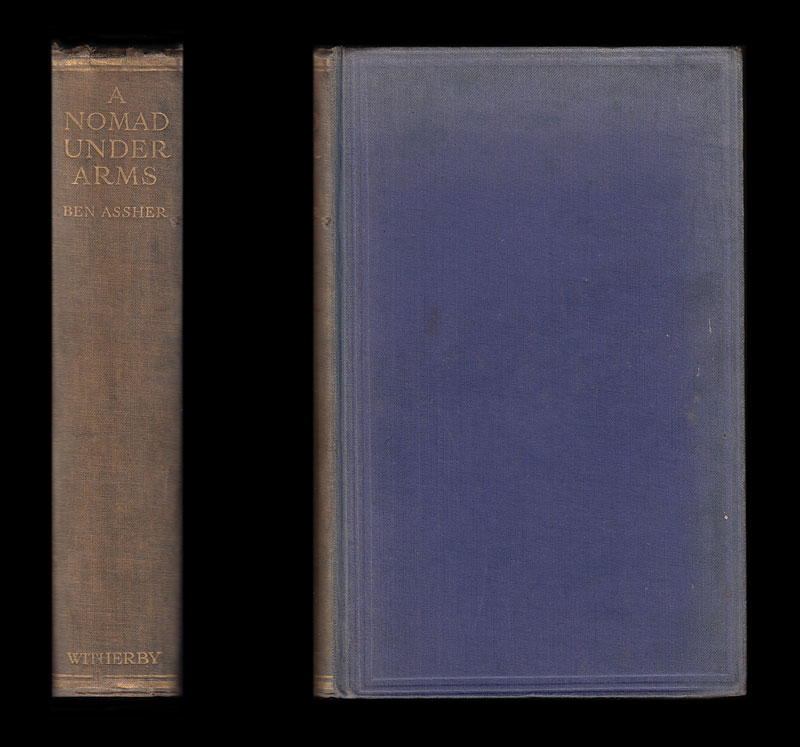
Front cover and spine
Further images of this book are
shown below
|
|
 |
|
 |
 |
|
|
|
Publisher and place of
publication |
|
Dimensions in inches (to
the nearest quarter-inch) |
|
London: H. F. & G. Witherby |
|
5½ inches wide x 8¾ inches tall |
| |
|
|
|
Edition |
|
Length |
|
1931 First Edition |
|
368 pages |
| |
|
|
|
Condition of covers |
|
Internal condition |
|
Original blue cloth gilt. The covers are
faded, marked and rubbed. There is a distinct band of discolouration around
the top and leading edges of the front cover, and a smaller band on the rear
cover, together with a number of old stains and marks. The spine has
darkened noticeably with age and the head of the spine is snagged with a
number of small tears in the cloth. The spine ends and corners are bumped
and frayed. The images below give a good indication of the current state of
the covers. |
|
There are no internal markings and the text is
clean throughout on tanned and musty paper. The front panel of
the original dust-jacket has been glued to the front end-paper (please see
the image below). The illustrations have acquired a yellowish tinge and
there is some play in the inner hinges. |
| |
|
|
|
Dust-jacket present? |
|
Other
comments |
|
No |
|
Collated and complete and a rare title which, to my knowledge, has
never been re-printed. This First Edition is internally
clean if a little musty, in worn, discoloured and faded covers, but with
part of the original dust-jacket tipped in to the front free end-paper. |
| |
|
|
|
Illustrations,
maps, etc |
|
Contents |
|
Please see below for details |
|
Please see below for details |
| |
|
|
|
Post & shipping
information |
|
Payment options |
|
The packed weight is approximately
900 grams.
Full shipping/postage information is
provided in a panel
at the end of this listing.
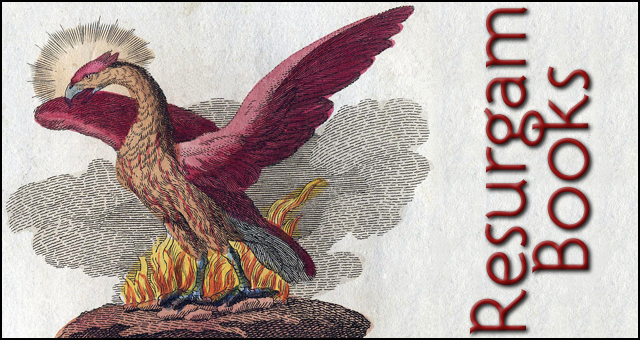 |
|
Payment options
:-
UK buyers: cheque (in
GBP), debit card, credit card (Visa, MasterCard but
not Amex), PayPal
-
International buyers: credit card
(Visa, MasterCard but not Amex), PayPal
Full payment information is provided in a
panel at the end of this listing. |
|
|
 |
|
  |
|
 |
 |
|
A Nomad Under Arms
Contents
Foreword
1914—ALPHA
The Base at Le Havre
Early Campaign Scenes—
Bailleul
Pont de Nieppe
Neuve-Eglise
1915—"ALL QUIET ON THE WESTERN FRONT"
Neuve-Eglise (continued)
Dickebusch
With the Flying Corps
Kemmel
Albert
1916—THE SOMME
Suzanne and Chipilly
Maricourt
Maltz Horn Ridge and Montauban
Wedge Wood
1917—THE HOME FRONT AND THE SALIENT
Combles
Life as a Casualty—
Etretat
At Home
Winchester
Passchendaele Ridge
Noyelles
1918—OMEGA
A Staff Course
Arras
A Battery Commander
The Last Hundred Days
The March to Germany
A Casualty Again
Epilogue
Index
LIST OF ILLUSTRATIONS
A Typical Village Scene on the Somme in 1916
Base Camp, Le Havre
One of My Guns Under Camouflage at Neuve Eglise
Brother Banks and Basil F.
Kemmel Position
Wireless Dugout, Kemmel forward Section
Forward Section, Kemmel, Cook-House Behind Position
No. 1 Gun, Albert Position
60 Pr. in Emplacement in Upnor Wood
Horse Lines at Etinehem, B.S.M. Chasem in Foreground
Horse Lines
In Action at Maricourt
12-inch " How." in Action
LIST OF MAPS
Theatre of Operations, B.E.F. Ypres-Bailleul
Battle of the Somme, Albert-Combles
Bethune-Noyelles
Arras-Warlus
The Last Hundred Days—Bapaume
The Last Hundred Days—Cambrai
“All references to
Official War Diaries have been so marked, and I am
indebted to the Committee of Imperial Defence
(Historical Records Section) for the facilities
afforded me in this direction.
*****
The references to Official Large Scale Maps are
given to afford a possible academic interest to such
as may now, or in the future, have access thereto.”
|
|
 |
 |
|
A Nomad Under Arms
Excerpts
. . . Within a crude retreat of such a
kind I used to share the midday meal (brought up from billets by the
officers' cook) with Banco, who was commander of the other section,
and of whom anon.
The unit's wagon lines eventually became established near the
crossing of the two roads, Bailleul-Armentieres and
Steenwerck-Neuve-Eglise ; although about that time I had no call to
visit them.
Upon the 14th of December an attack was launched by British troops
against the line from Hollebeke to Modelstede (a farm) : the third
division was employed, assisted by the 18th Army Corps. To give some
adequate idea of the expenditure of ammunition in those days of weak
and desultory assaults it may be here remarked how on this front,
whereon some ninety British guns were pouring steel from seven
o'clock a.m. till 4.15 p.m., the total of the shells discharged was
slightly under seven " thou," or seventy-five per gun throughout the
period of the fray, or (easier yet to contemplate) some eight per
gun per hour. Comment is needless, reader, at this stage.
In point of fact the record is that in this month it came about that
many guns were silent all day long, and if the firing on our part
was kept restricted owing to lack of plenty in supply of shells,
then it is also true the Hun was little more aggressive. Also it was
a fact of clarion note that German shelling of our trenches and the
houses close behind the lines was stopped effectively by due
retaliation on our part against his batteries and his infantry. In
such a role the " heavies " played a major part.
The town of Neuve-Eglise was unmolested after we arrived, until one
day a round or two was put across in casual style upon the exits
from the hamlet, coming to be a more or less uncertain ritual round
the hour of dusk about the time that we returned to billets. Never
were we disturbed by shelling in the night, no doubt through fear of
prompt retaliation . . .
* * * *
. . . The vacancies which these events
had brought about were quickly filled. First came a ranker officer
commissioned in the previous autumn. He was a steady fellow, nearing
middle-age, and incidentally a teetotaler. Raised in a regimental
atmosphere of tape and regulations, blameless in conduct, spotless
in official record, he had attained the excellent, though most
depressing ornament of soldierly routine, and was the bearer of a "
rooty " medal. Marked by an affable address and willing to oblige on
all occasions, our Mr. Wimple proved an acquisition, and was a
sound, reliable and useful man, if incidentally, also, rather "
stodgy."
Wimple at once assumed the vacant section leadership and with the
personnel took over my two rearward guns, while I, attended by my
former braves, moved forward to the post of honour at the front
position. Here I enjoyed a greater comfort than had been my lot
before, in virtue of a little farm-house (free of the dung-yard
realm enwrapped in agricultural tradition) lying some fifty yards to
eastwards of the guns. I used a room at night with red-tiled
flooring, finding retreat within throughout the day whenever the
spirit so inclined me. Also a good dry barn gave shelter to the men,
as formerly had been the case in rear.
The area round this farm was under cultivation— visions of beet
across the road upon our northern flank return to me when I address
myself to recollection, plough on the right, and pasture forward.
Hops I recall to rearward, through the summer, reaching along the
highway's southern border up to a point right opposite the other
section. And there were workers in these fertile fields in season,
while the particular farm itself was occupied by farmer, wife and
daughter . . .
* * * *
. . . As in the case on Kemmel Hill
the battery occupied two separate sites, about 300 yards from one
another, though they were both located in a valley lying towards the
north-west of the village called Suzanne. Originally the guns may
all have been in one position, but by the time that I had joined the
unit, or soon after, only a section still remained.
This section was in action on the eastern limit of an isolated
copse—a small formation known as Upnor Wood upon the large-scale
Army maps. To east and rear of this location lay the other section,
placed on the foreward edge of yet another sylvan feature having an
area greatly more extensive than the former.
Even at the particular period I refer to now a marked artillery
activity was evident on either side about this portion of the line,
for hereabouts the British sector joined the Frenchmen's, and at
this time the unit to a large extent was occupied in firing in
support of grey-blue tunics on its right.
Now whether through casual indiscretion, or for a cause or reasons
not to be avoided, it was an obvious fact that the discerning Hun
had by this time identified at least our left position. But there
was nothing in this situation to beget surprise, because the
attempts at local camouflage were of a parlous nature—if, as a
matter of fact, such efforts could be held to ever have been made at
all.
For right in the middle of the copse, and centrally disposed behind
the guns, and clearly to be viewed from air despite surrounding
firs, there stood a canvas hut wherein the battery's maps and
various gadgets used for fire-control were stored. The spot was that
from which the section was directed.
Then, at about a hundred and fifty yards in rear, another line of
huts, of various shapes and types, had been arranged in blatant
fashion down below a natural bank, some fifteen feet in average
height . . .
* * * *
. . . And in the days that followed after, what was
plenitude beside the wealth of pit-props, concrete slabs, and
corrugated-iron sheeting, and the like, tha t battery wagons used to
bring at varied hours for gunners to unload at the position ? What
was material without stint if this were not ? All splendid stuff—and
British.
So in the course of time the men had dug-outs ten feet deep, first
excavated, lined with pit-props as supports, and roofed with timber
and the aforesaid sheeting, with an effective height of earth on
top, and concrete slabs to act as " bursters," followed by still
more earth, and scattered turf-sods. Also a B.C . post of like
construction, though less spacious ; and a commodious officers' mess
about a hundred and fifty yards behind the battery on the flank, and
roughly twenty paces from the road.
The yawning cavern that this latter dug-out formed throughout the
earlier course of its creation, when there were sweating mortals
delving in the loam some dozen feet below the surface of the ground,
and mounds of earth lay strewn about the edges, came to be looked on
as the local wonder, encouraging visits from the neighbouring clans
to witness work in progress.
But as the mess was last of all the tasks I set in hand some time
elapsed before the enterprise was even started, and in the meantime
we were housed for meals within an unimportant excavation two 01
three feet deep, and covered by a gun tarpaulin, like a tent. I can
remember dining (euphemistic phrase) in this retreat one moonless
evening when the air was quiet and all seemed presage of a peaceful
night, when hark ! across the stillness of the April atmosphere (or
was it May ?) that surging whine, too ominous of the heavier hows,
to be mistaken by those warriors tried of war, broke suddenly in
upon the local hearing. The whine developed to a roar, the roar to
thunder-crash ! and a pair of 8-inch hows, dropped close together
near us on the sward, and lights went out, and in a space of seconds
earth and sods came tumbling down upon the paulin set above our
heads. The party soon decamped, and little time had lapsed before
two other thunderbolts arrived ; but then came peace, and a
resumption of the meal.
About three hundred yards behind the guns, the shelters of the men
off duty lay dispersed across a scattered area that contained the
officers' " cubbyholes " also. Only on one occasion were these
actual shelters shelled, and that at night, when gas disturbed the
general slumber and the noise was deafening, for the aggressive Hun
used high explosive simultaneously.
The battery suffered intermittently at first, more usually from "
pip-squeaks" and the German 4 point 2, but with the front becoming
stabilised some short while after my arrival on the scene (I claim
no credit for it, Britons) there was a marked improvement in the
situation, and the Germanic batteries drew back somewhat on our
sector. As a result of this the enemy found the range to the
position that we occupied beyond the capabilities of many of their
guns, for in regard to where the line was finally established after
the retreat had ended, we ourselves were far from being in a forward
site.
However that may be, the German used to shell Souastre at night
quite frequently, and also the reserve positions in our rear, where
working parties laboured under cover of the dark until the entire
trench system was complete ; while projectiles of small calibre used
to sing in passage overhead, and fill the air through intermittent
periods of the time dividing dusk and dawn with a harmonious music
of the skies, and curious whistles.
Now in the meantime two more subalterns had joined, both youngsters
lately from the " Shop," and useful acquisitions, if at the first
they lacked experience in the role they would be called upon to
play. One, Brightly, happened to be a well-known V.C's brother, and
in the course of time became the battery observation officer. During
the Hundred Days' advance he proved a tireless worker in his
country's cause.
The other, Parkissly, had been commissioned for a year or so, but
owing to the edict none should fight until they reached the age of
nineteen years, the lad had been employed at home whilst waiting
restlessly for the appointed day. This came, and he was happy.
One of the features of the period subsequent to the Retreat, whilst
marked uncertainty regarding German plans still formed the keynote
of our dispositions, lay in the enemy's frequent practice on this
front of flying low across the lines at dusk, and reconnoitring gun
positions. But on the 25th of April it befell a hostile aeroplane to
meet the fate of such as challenge Providence once too often, and
the two batteries of my own brigade in action some way forward of
the other pair attacked an enemy airman, as he circled over them,
with Lewis gun and rifle fire, and brought him low, and " crashed "
him.
Various feeble efforts, too, the Germans made to spread subversive
propaganda from the air, but little can have come of these attempts,
and they were not continued long. I picked a leaflet up myself one
day, not far from the position, forwarding on the printed word to
higher quarters for transmission rearward. Though as a document
conceived to undermine the troops' morale it might be held as
typically Hunnish, scarcely could it be rated efficacious. As to the
sermon that it preached, or tale it told, or futile exhortation it
displayed, my memory fails me here, but small as was the wonder it
inspired in me ten years ago, so little matter now. . . .
A reference I have made in previous lines to one named Jolliboy
requires that I should amplify the same before proceeding further.
Here was a prewar corporal of the Gunners who had served in France
and Flanders since the earliest days, had been commissioned, and now
found himself with major's rank, commanding. He was a splendid
officer, and beloved, though only twenty-seven years of age and of
plebeian trend in matters that pertained to speech, from both
delivery's point of view and choice of phrase—and certain phrases
that he chose were passing choice, and cannot be repeated on the
printed page. Expressive, none the less, were certain others not so
lurid in effect, as, for instance, when he spoke of family matters,
mentioned with obvious and paternal pride he had " a pair of kids,"
and that another, he had lately heard, was " on the stocks."
" I own yer—body and soul," he once affirmed in ringing tones to one
of his officers who had sought to argue with him on some point; and
there the matter ended.
Burly in build, and with a rolling gait, this proletariat's son was
of a yeoman type and made good company at any time, and would have
shone in any sphere where men of character elected to foregather.
Manly and kindly, and a jovial soul, with common sense not less
conspicuous than the fount of courage springing from his heart, he
was a fine example of the British fighting man, and I am glad that I
have served beside him.
Still there remains another B.C. I have yet to note —a soul to whom
I give the name of Bucking. Bit of a "dasher" in his way, a
territorial swain with horsey bent and airy manner; though he
possessed but little innate " pep " to give support to an exterior
that was smart ; nor did he lack the attributes of one accustomed to
impress with bearing, words and phrases. Pleasant withal, and gifted
with the "masher's" complex, Bucking improved the social atmosphere
in which he moved in war, and in the days of peace had been a member
of the Baltic. . . . Somewhat in front of what remained of Hebuterne
my battery had established a convenient observation post within a
trench that formed a part of the original defences on " The Somme."
Uninterrupted views across a wide expanse of country were obtained
from here, and the existing front line system lay not far away, if I
recall aright, and on a slightly lower level. Chance and occasion
came at times to fire on working parties in the German lines, or
else at various points behind them : firing on single men, or pairs,
or trios was a waste of ammunition generally, but the desire to do
so often a temptation.
I was myself once moved in this direction when I saw a pair of Huns
proceeding casually along a road towards a certain point of which
the map location was apparent. Turning a section on this point I
waited until some seconds only would elapse before the aforesaid
Germans reached it, when there was word from me to open fire—bang!
and we " strafed " 'em proper.
Run, did you say ? You betcher (Yankee jargon) ! And we chased 'em.
Chased 'em along the road they followed till they reached the crest,
or else we hit 'em. Very uncertain, but I hope the former. Even in
those days I discerned no joy in killing : rather the glory was to
see that Teuton pair skedaddle.
Then at another time, after journeying to the same O.P. and meeting
Foxer there, the Hun bethought him he would " strafe " our
neighbourhood, and shelled the area close around us, so that we sat
in gloom enduring his attention, though we were most intent on
finding out from which direction he was firing. Over that open
country sounds moved freely, and, in the course of opportunities
succeeding one another with unpleasant frequency, it was no arduous
task to take a careful bearing on the point whence emanated the
offensive boom of guns in action at a distance. Later, the
information so obtained was passed through intermediate channels to
the official " counterblaster " ; and in the course of time my
country answered the aggressive Hun with guns intended then and
there to " larn 'em."
Once as we rested peacefully at ease the wireless operator heard a
German aeroplane communicating with a battery, and informed us so. A
hostile 'plane was circling in the middle distance, and in a minor
while there came the ranging rounds of five-nine-howitzers. It was a
curious fact to note that, of the fifty shells or so the Hun
expended, all of them were aligned upon our right-hand gun-pit in
the main position, and there was no attempt at any broad dispersion
of the zone of fire. The Fates were kind to us, for damage was
confined to France's countryside, which in the neighbourhood
assailed presented an uneven scene and pock-marked surface to the
human eye.
To meet attacks on other fronts artillery had been gradually
withdrawn from our corps sector to support the infantry hard-pressed
elsewhere, and as a consequence extremely heavy work had fallen to
the lot of those brigades remaining. During the months that followed
the Retreat we used to shell the Huns continuously, it almost might
be said, and more especially at night, when we engaged in harassing
fire upon communications—tracks and roads—and all the known
positions of the enemy batteries seriatim. Never have I experienced
such intensive bouts, so strenuously maintained, so systematically
aggressive in their tireless application and intention. As a
rejoinder to the German pressure it could scarcely have been more
effective, and the unhappy prisoners that we took in various raids,
and later on (about the outset of " The Hundred Days "), confessed
to never having faced the like at any period of the war . . .
|
|
 |
|
  |
 |
|

Please note: to avoid opening the book out, with the
risk of damaging the spine, some of the pages were slightly raised on the
inner edge when being scanned, which has resulted in some blurring to the
text and a
shadow on the inside edge of the final images. Colour reproduction is shown
as accurately as possible but please be aware that some colours
are difficult to scan and may result in a slight variation from
the colour shown below to the actual colour.
In line with eBay guidelines on picture sizes, some of the illustrations may
be shown enlarged for greater detail and clarity.

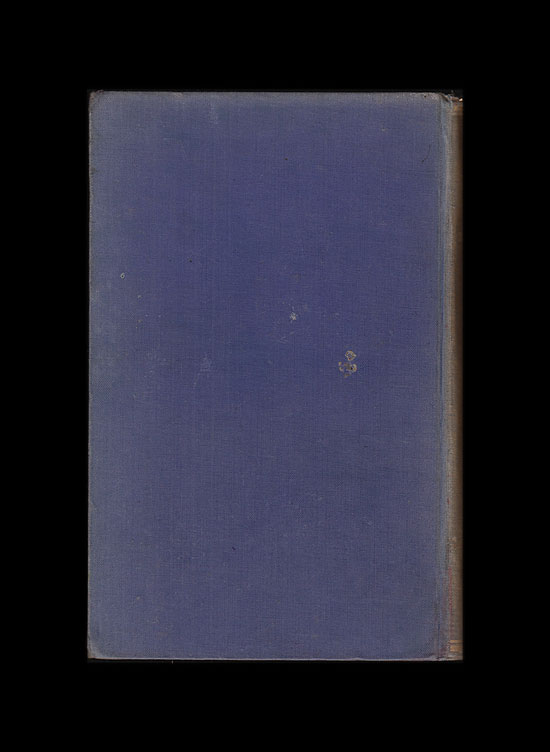

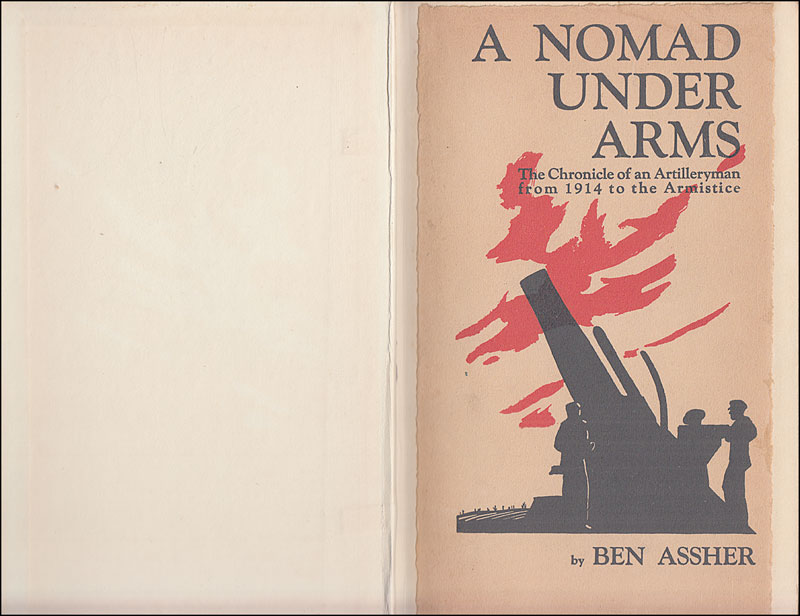
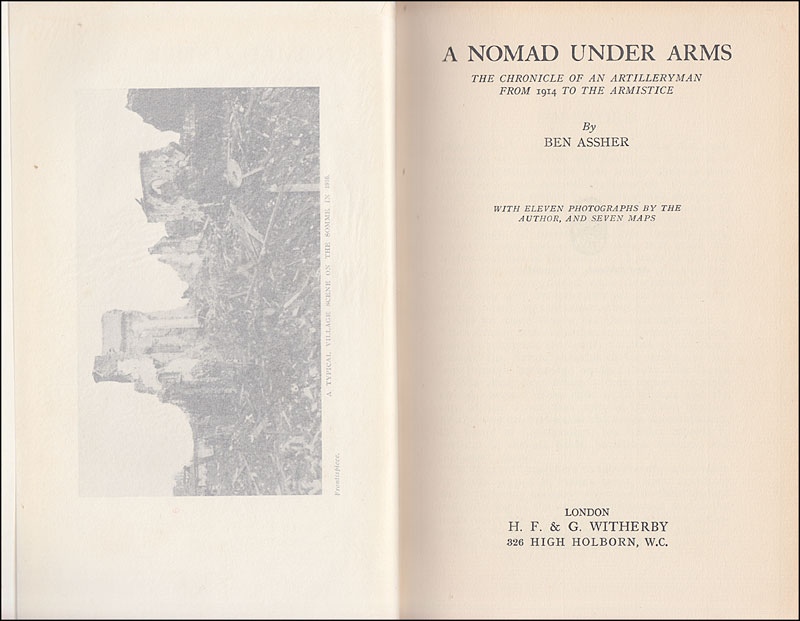
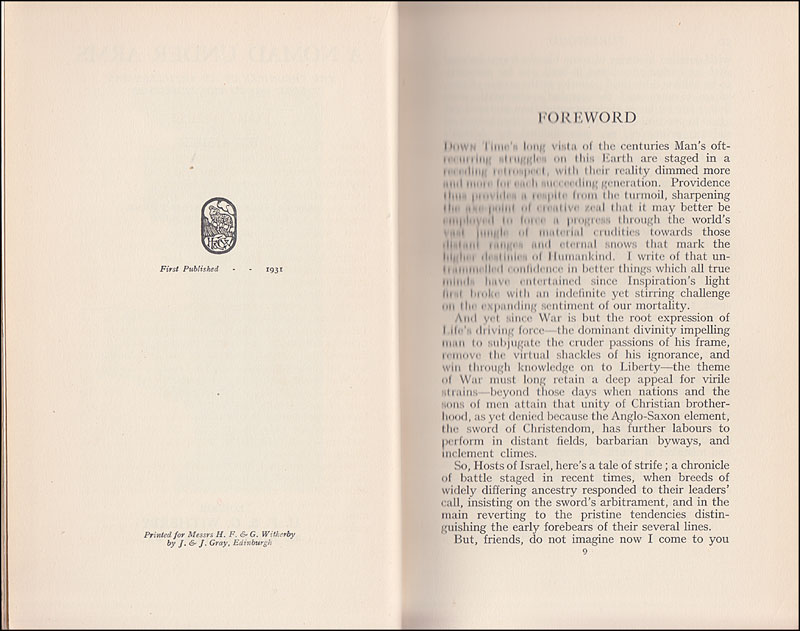
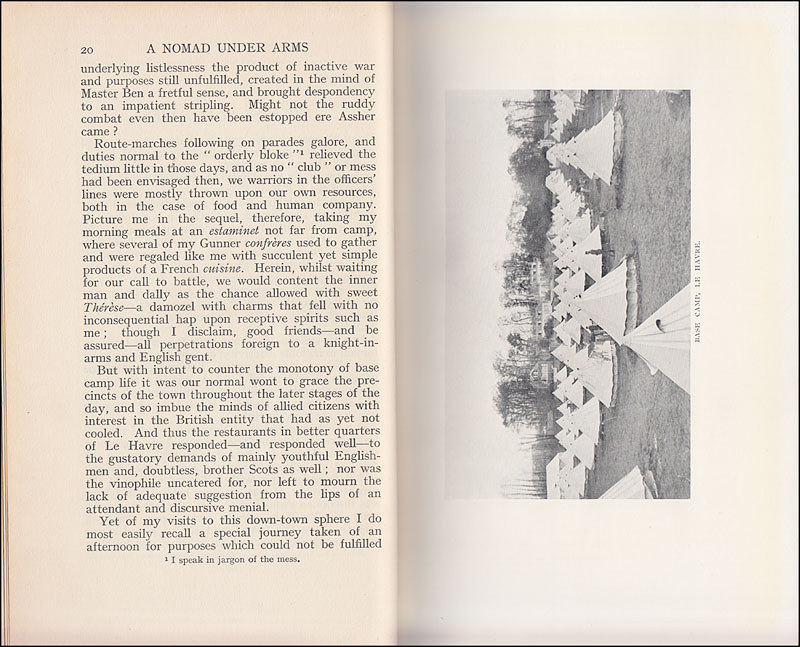
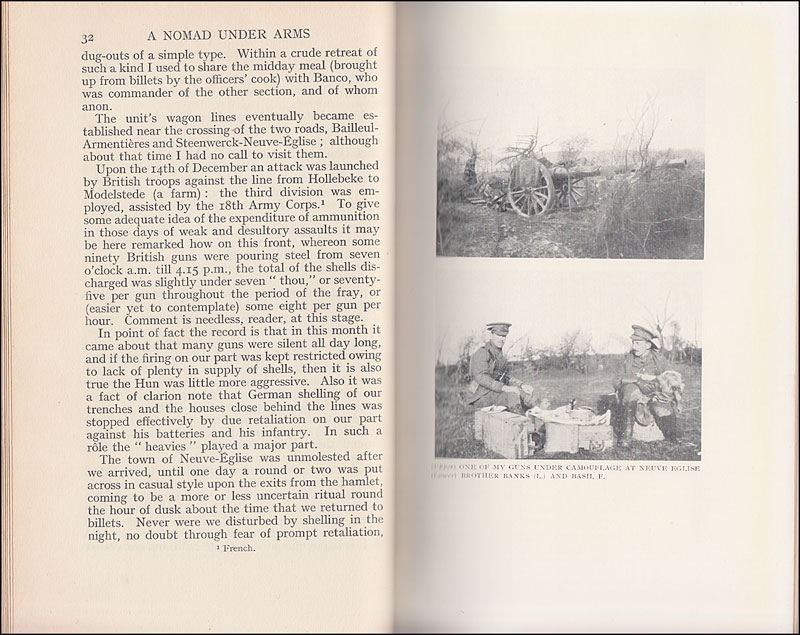
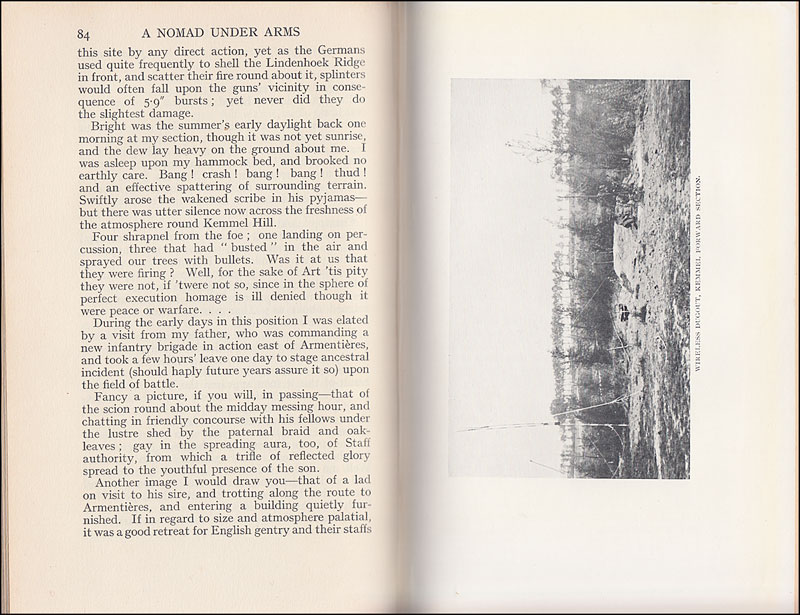
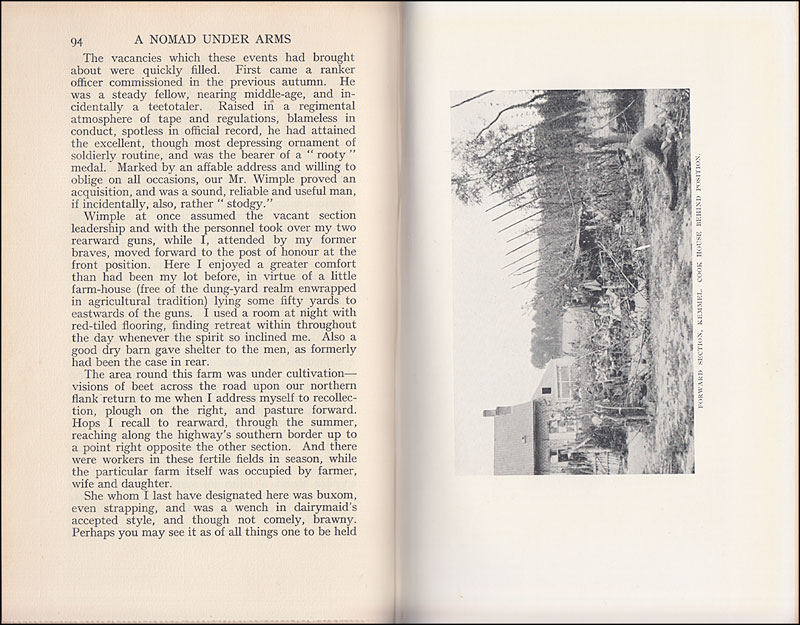
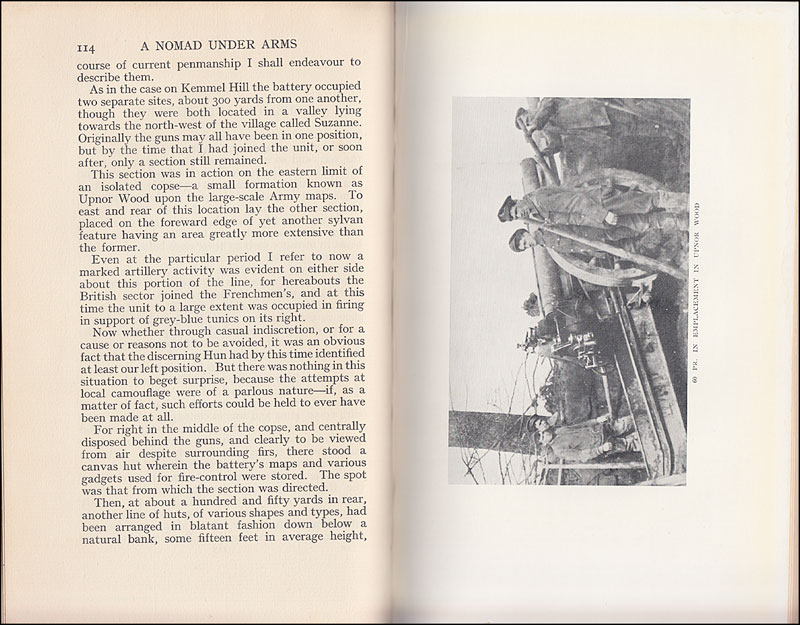
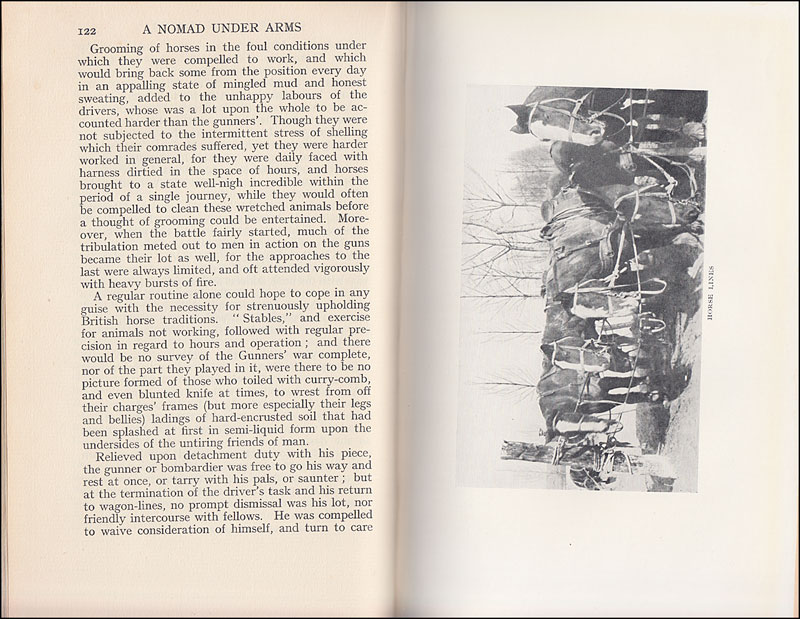
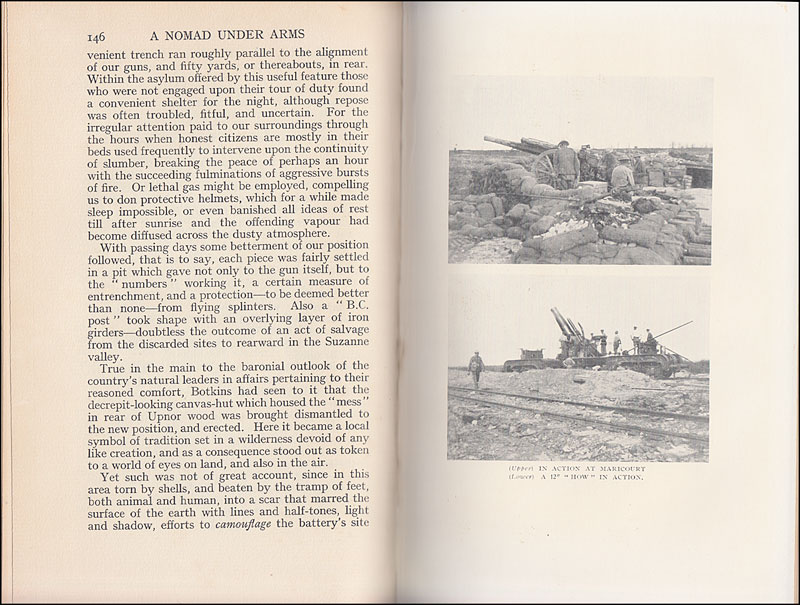
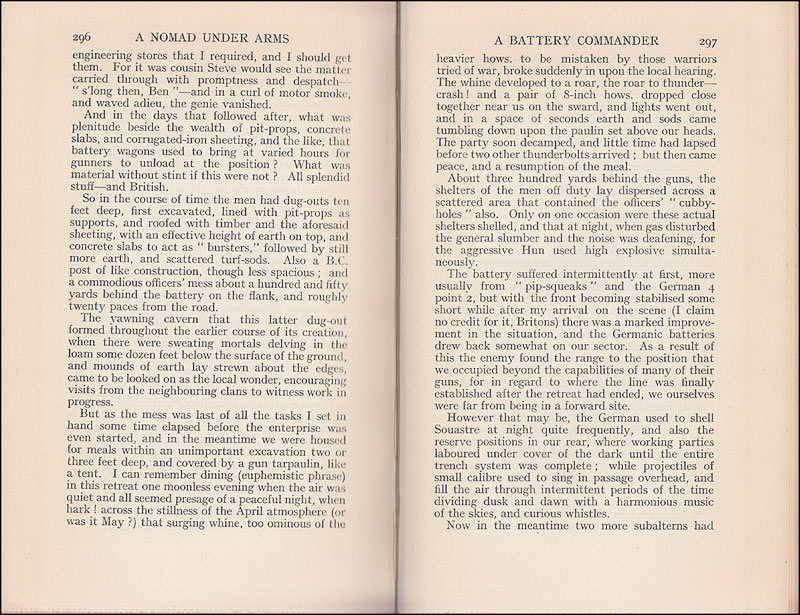
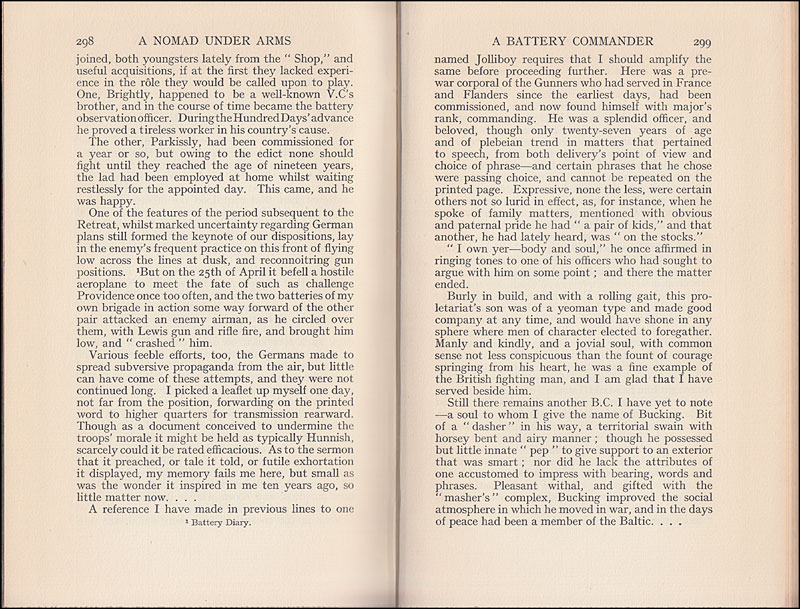
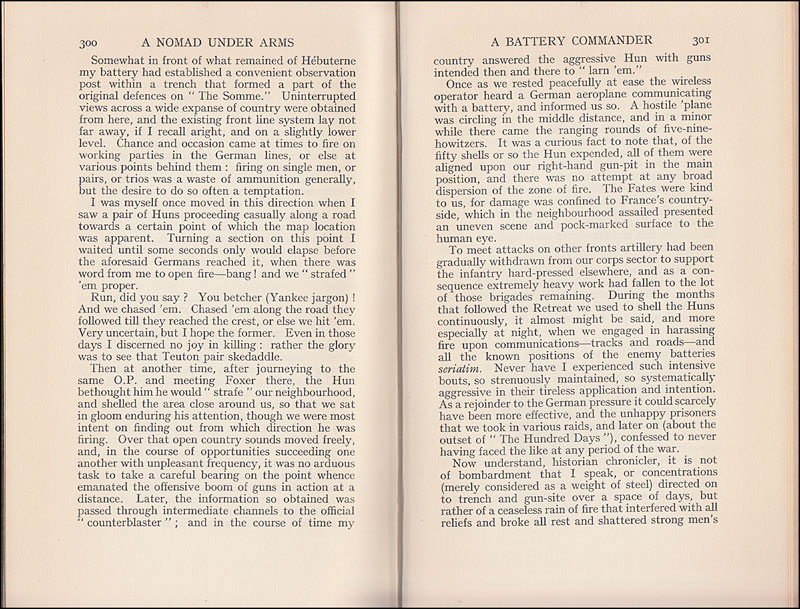 |
|
 |
|
 

|
 |
|
U.K. buyers:
|
To estimate the
“packed
weight” each book is first weighed and then
an additional amount of 150 grams is added to allow for the packaging
material (all
books are securely wrapped and posted in a cardboard book-mailer).
The weight of the book and packaging is then rounded up to the
nearest hundred grams to arrive at the postage figure. I make no charge for packaging materials and
do not seek to profit
from postage and packaging. Postage can be combined for multiple purchases. |
Packed weight of this item : approximately 900 grams
|
Postage and payment options to U.K. addresses: |
-
Details of the various postage options can be obtained by selecting
the “Postage and payments” option at the head of this
listing (above). -
Payment can be made by: debit card, credit
card (Visa or MasterCard, but not Amex), cheque (payable to
"G Miller", please), or PayPal. -
Please contact me with name,
address and payment details within seven days of the end of the auction;
otherwise I reserve the right to cancel the auction and re-list the item. -
Finally, this should be an
enjoyable experience for both the buyer and seller and I hope
you will find me very easy to deal with. If you have a question
or query about any aspect (postage, payment, delivery options
and so on), please do not hesitate to contact me.
|
|
 |
 |
|
International
buyers:
|
To estimate the
“packed
weight” each book is first weighed and then
an additional amount of 150 grams is added to allow for the packaging
material (all
books are securely wrapped and posted in a cardboard book-mailer).
The weight of the book and packaging is then rounded up to the
nearest hundred grams to arrive at the shipping figure.
I make no charge for packaging materials and do not
seek to profit
from shipping and handling.
Shipping can
usually be combined for multiple purchases
(to a
maximum
of 5 kilograms in any one parcel with the exception of Canada, where
the limit is 2 kilograms). |
Packed weight of this item : approximately 900 grams
| International Shipping options: |
Details of the postage options
to various countries (via Air Mail) can be obtained by selecting
the “Postage and payments” option at the head of this listing
(above) and then selecting your country of residence from the drop-down
list. For destinations not shown or other requirements, please contact me before buying.
Due to the
extreme length of time now taken for deliveries, surface mail is no longer
a viable option and I am unable to offer it even in the case of heavy items.
I am afraid that I cannot make any exceptions to this rule.
|
Payment options for international buyers: |
-
Payment can be made by: credit card (Visa
or MasterCard, but not Amex) or PayPal. I can also accept a cheque in GBP [British
Pounds Sterling] but only if drawn on a major British bank. -
Regretfully, due to extremely
high conversion charges, I CANNOT accept foreign currency : all payments
must be made in GBP [British Pounds Sterling]. This can be accomplished easily
using a credit card, which I am able to accept as I have a separate,
well-established business, or PayPal. -
Please contact me with your name and address and payment details within
seven days of the end of the auction; otherwise I reserve the right to
cancel the auction and re-list the item. -
Finally, this should be an enjoyable experience for
both the buyer and seller and I hope you will find me very easy to deal
with. If you have a question or query about any aspect (shipping,
payment, delivery options and so on), please do not hesitate to contact
me.
Prospective international
buyers should ensure that they are able to provide credit card details or
pay by PayPal within 7 days from the end of the auction (or inform me that
they will be sending a cheque in GBP drawn on a major British bank). Thank you.
|
|
 |
 |
|

(please note that the
book shown is for illustrative purposes only and forms no part of this
auction)
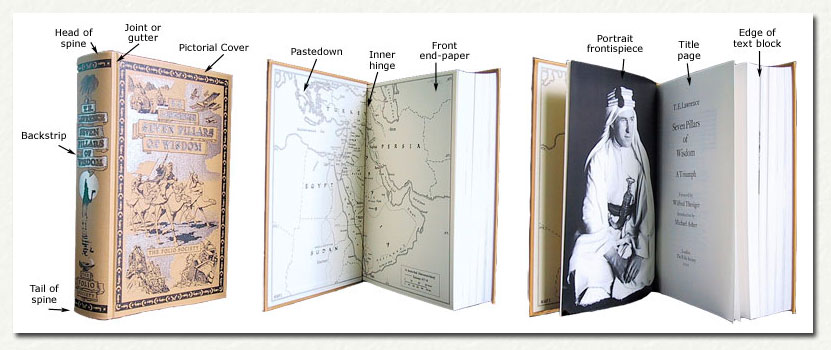
Book dimensions are given in
inches, to the nearest quarter-inch, in the format width x height.
Please
note that, to differentiate them from soft-covers and paperbacks, modern
hardbacks are still invariably described as being ‘cloth’ when they are, in
fact, predominantly bound in paper-covered boards pressed to resemble cloth. |
|
 |
 |
|

Fine Books for Fine Minds |
I value your custom (and my
feedback rating) but I am also a bibliophile : I want books to arrive in the
same condition in which they were dispatched. For this reason, all books are
securely wrapped in tissue and a protective covering and are
then posted in a cardboard container. If any book is
significantly not as
described, I will offer a full refund. Unless the
size of the book precludes this, hardback books with a dust-jacket are
usually provided with a clear film protective cover, while
hardback books without a dust-jacket are usually provided with a rigid clear cover.
The Royal Mail, in my experience, offers an excellent service, but things
can occasionally go wrong.
However, I believe it is my responsibility to guarantee delivery.
If any book is lost or damaged in transit, I will offer a full refund.
Thank you for looking.
|
|
 |
 |
|
Please also
view my other listings for
a range of interesting books
and feel free to contact me if you require any additional information
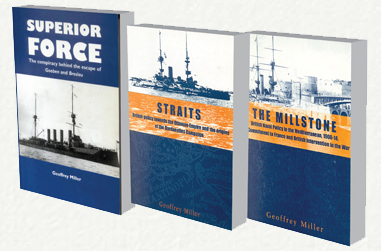

Design and content © Geoffrey Miller |
|
 |
|
|
|